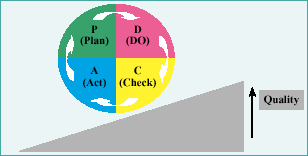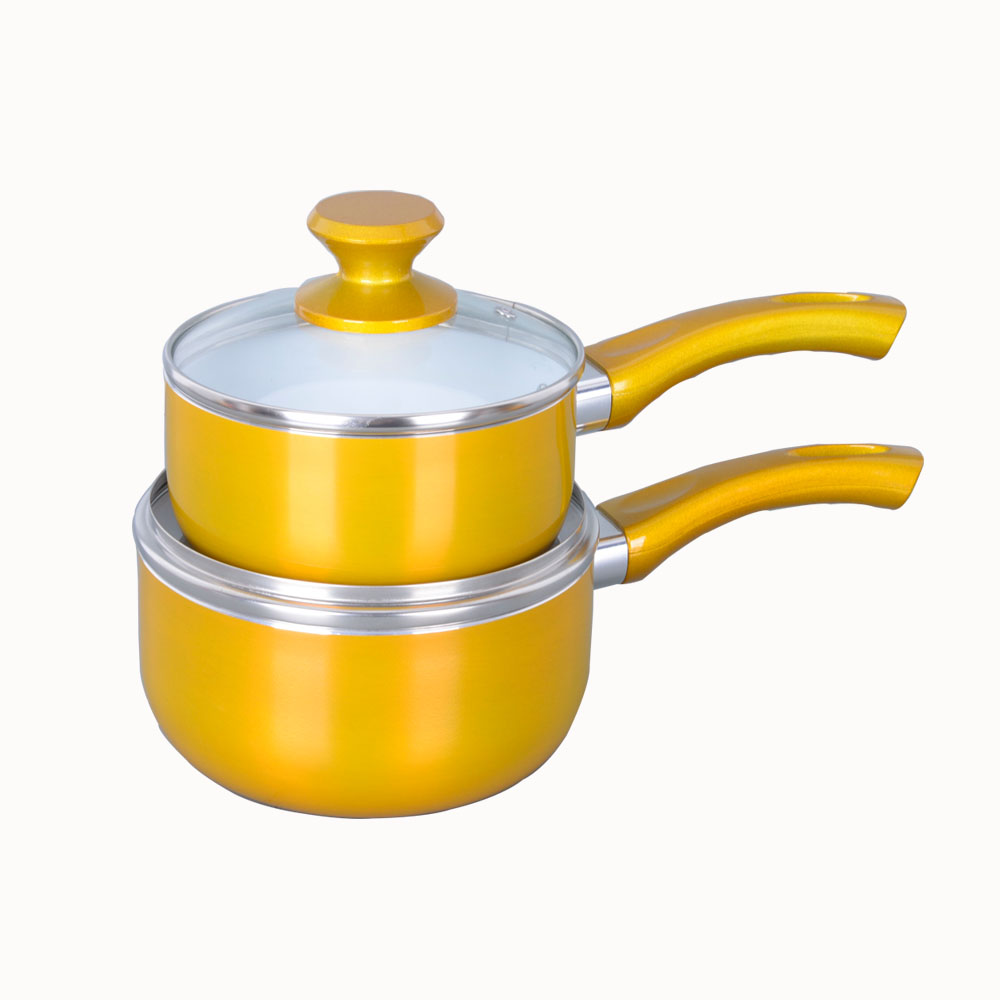IV) "Seven-step method"
a) Seven steps method content:
The "seven-step approach", in brief, is to define problems, identify causes and analysis, formulate methods and practices, and then review and institutionalize methods.
The first step: finding the problem (selec a problem and describe it clearly) 
Find out the problems to be improved. When the target is locked, the relevant employees will be called to become the main force for improvement. The leader will be selected and the person responsible for improvement will be given a timetable to follow up.
Step 2: Study the Present Production Method (Study the Present System)
Collect data on current production methods and organize them.
Step 3: Identify possible causes
Combine experienced workers with Brainstorming, Control charts, and Cause-and-effect diagrams to identify the causes of each possible problem.
Step 4: Plan and implement a solution
Re-use of experienced staff and technical professionals, through the brain concussion methods and various testing methods, to find out the solutions. When the method design is completed, it will be implemented immediately.
Step 5: Evaluate effects
Through data collection, analysis, check whether the solution is effective and what effect is achieved.
Step 6: Standardize any effective solutions
When the method proves to be effective, it is formulated as a code of practice and all employees must comply with it.
Step 7: Review the effectiveness and develop new goals. (Reflect on process and develop future plans)
When the above issues are resolved, summarize their effectiveness and formulate solutions to other problems.
As previously mentioned, Walter Shewhart's PDCA cycle is combined with the "seven-step approach" to achieve "continuous improvement." The so-called PDCA cycle (Plan-Do-Check-ActCycle) is:
Plan the experiment
Do it-perform the experiment
Check the result of the experiment
Method according to what you observed
When the PDCA cycle is combined with the "seven-step method," it is:
Plan
1)selec and describe problem
2)Study present system
3)Identify possible causes
Do
4)Plan and implement solution
Check
5) evaluate effects
Act
6)Standardize solution
7) Reflect on process and develop future plans
In general, PDCA is a continuous cycle, and the quality is continuously improved to achieve the purpose of "Continuous Improvement" so as to meet the "zero defects" requirement.
b) Example 1:
For example, a company has received complaints from its guests many times in print problems, and even received returns and rework. Of course, the sales department was very dissatisfied with the printing department, but the printing department also complained about the poor supply of materials from the purchasing department, including throwing powder on the paper, many papers, and ink being too soft. The printing department also complained of improper handling by the production department, which led to an increase in the return rate. On the contrary, the Purchasing Department also complained that the defective storage of paper by the warehouse department was not improper procurement. Of course, the warehouse department will also sue the shipping department to delay the shipment and cause no one to receive the goods. In short, they blamed each other endlessly, but they did not contribute much to quality improvement. If you use the "seven-step method," you can solve the above problems.
The first step: Finding the problem:
In all printing complaints, we can be classified into the following reasons. Such as paper powder (40 cases), color difference (20 cases), poor overprint (8 cases), bottom (12 cases) and ink mist scattered Scumup (5 cases).
The second step: study the current production method:

If we convert the above data into percentages and use the Pareto chart, we find that paper powder accounted for 47%, color difference 23.6%, overprint 9.4%, bottom 14%, and ink mist 6%.
Of course, we cannot solve all problems at once and we must follow the steps. If we can solve the problem of paper dust at once, we will almost half of the complaints. So solving the problem of paper powder is the primary goal.
Step 3: Find out the various reasons:
Through the concussion method, various employees proposed various reasons, such as poor paper products, lack of cleaning tape, inadequate inspection, lack of maintenance of the machine, excessive dusting, and so on. If fish bone analysis is used, various reasons can be summarized.

Step 4: Plan and Develop Solutions
i) Method:
- Develop forms, record and monitor regular cleaning tapes
- Develop a form to record when the ink is mixed
- Check how many sheets per sheet should be checked once. If every 500 sheets are short-circuited, the chief and vice captains are required to be responsible for the inspection, forming a check every 250 sheets. If there is a problem, immediately improve, or even shut down the cleaning tape.
Of course, due to advances in science and technology, some instruments that monitor print quality can be used.
- Develop a code to limit dusting
Ii) Manpower:
- The Ministry of Personnel must assist in hiring experienced pilots. And provide on-the-job training to serving captains so that they can achieve their due level
- Encourage employees to play a team spirit. With bonus rewards and penalties, if employees achieve a certain level of quality and quality, they can receive bonuses. On the contrary, they must deduct wages.
- To improve the accountability system, each captain must be responsible for the performance, maintenance, output and quality of the nuclear machinery under control
Iii) Material:
- Establish a system and record it in the document: incoming materials must be properly stored and stored
- Develop standards to require suppliers to provide qualified materials
- The Ministry of Production makes a form to record the stability of the material at the time of production, and serves as proof of representation with the supplier (for example, if it is printed every 4,000 sheets, the tape must be cleaned and recorded on the record. If 2,000 copies are printed each time, To wash the tape, the reason is that the paper powder is made, which becomes proof that the supplier must be compensated.)
Iv) Machinery:
- Establish timetables for regular machine maintenance, cleaning and refueling or replacement of parts, etc. All work is documented and verified by superiors
- Develop a control chart to monitor the operation of the machine
Size:16 / 18 / 20cm
Can be produced by processed aluminum, forged aluminum or die-cast aluminum.
Different thickness can be available
Anature Saucepan has an aluminum body for efficient and uniform heat distribution, resulting in faster cooking. It features a glass lid so convenient to check the cooking and a helper handle for easy lifting. Suitable for use on any type of cooking surface, it is also dishwasher safe.

Saucepan
Hard Anodized Saucepan,Ceramic Coated Saucepan,Non-Stick Saucepan,Marble Coated Saucepan
Zhejiang Haoqi Industry And Trade Co.,Ltd. , http://www.anaturekitchen.com